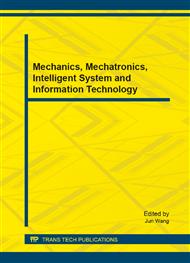[1]
Jordi Freixenet, Xavier Mu, Joan Mart and Xavier Llad. 2004. Colour Texture Segmentation by Region-Boundary Cooperation, presented at the 8th European Conference on Computer Vision, May 11-14, (2004).
DOI: 10.1007/978-3-540-24671-8_20
Google Scholar
[2]
Jieyu Zhao and Xiaowei Geng. 2008. Interactive image segmentation via multi-cue dynamic integration, presented at the 15th IEEE International Conference on Image Processing, October 12-18, (2008).
DOI: 10.1109/icip.2008.4712437
Google Scholar
[3]
David R. Martin, Charless Fowlkes and Jitendra Malik. 2004. Learning to Detect Natural Image Boundaries Using Local Brightness, Color, and Texture Cues, IEEE Trans. Pattern Anal. Mach. Intell., 26(5): 530-549.
DOI: 10.1109/tpami.2004.1273918
Google Scholar
[4]
Yuri Boykov, Olga Veksler and Ramin Zabih. 2001. Fast Approximate Energy Minimization via Graph Cuts, IEEE Trans. Pattern Anal. Mach. Intell., 23(11): 1222-1239.
DOI: 10.1109/34.969114
Google Scholar
[5]
Allen Y. Yang, John Wright, Yi Ma and S. Shankar Sastry. 2008. Unsupervised segmentation of natural images via lossy data compression, Computer Vision and Image Understanding, 110(2): 212-225, (2008).
DOI: 10.1016/j.cviu.2007.07.005
Google Scholar
[6]
B. J. Frey and D. Dueck. 2007. Clustering by passing messages between data points, Science, 315: 972–976.
DOI: 10.1126/science.1136800
Google Scholar
[7]
Xiaofeng Ren and Jitendra Malik. 2003. Learning a Classification Model for Segmentation, presented at the 6th International Conference on Computer Vision, October 13-16, (2003).
Google Scholar
[8]
Jianbo Shi and Jitendra Malik. 2000. Normalized Cuts and Image Segmentation, IEEE Trans. Pattern Anal. Mach. Intell., 22(8): 888-905.
DOI: 10.1109/34.868688
Google Scholar
[9]
Greg Mori. 2005. Guiding Model Search Using Segmentation, presented at the 8th International Conference on Computer Vision, October 17-20, (2005).
Google Scholar
[10]
John M. Winn, Antonio Criminisi and Thomas P. Minka. 2005. Object Categorization by Learned Universal Visual Dictionary, presented at the 8th International Conference on Computer Vision, October 17-20, (2005).
DOI: 10.1109/iccv.2005.171
Google Scholar
[11]
Timo Ojala, Matti Pietikinen and Topi M. 2000. Gray Scale and Rotation Invariant Texture Classification with Local Binary Patterns, presented at the 4th European Conference on Computer Vision, June 26 - July 1, (2000).
DOI: 10.1007/3-540-45054-8_27
Google Scholar


